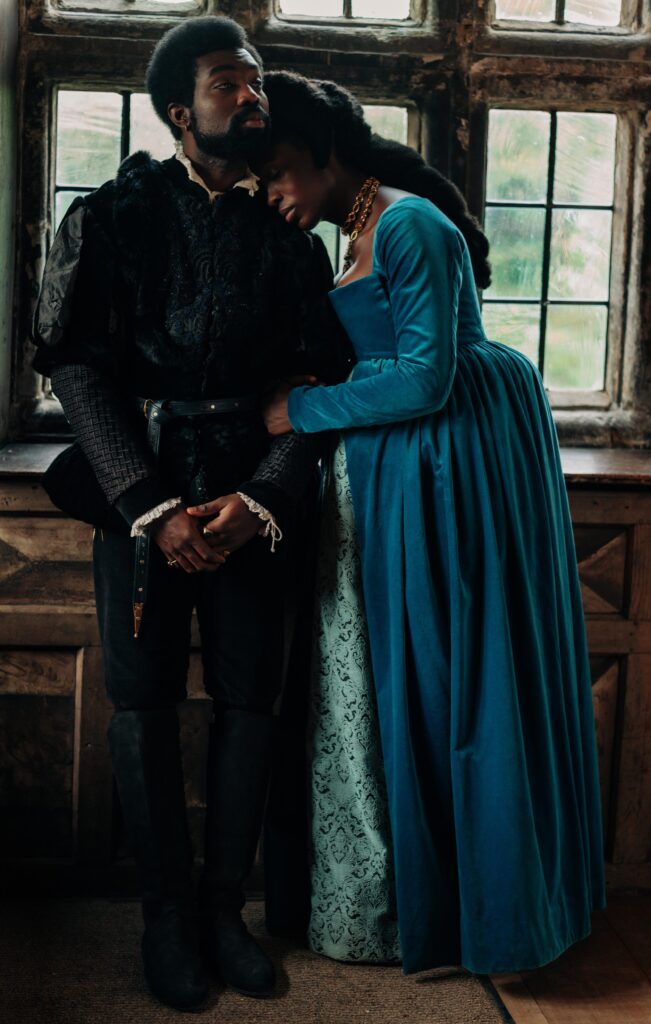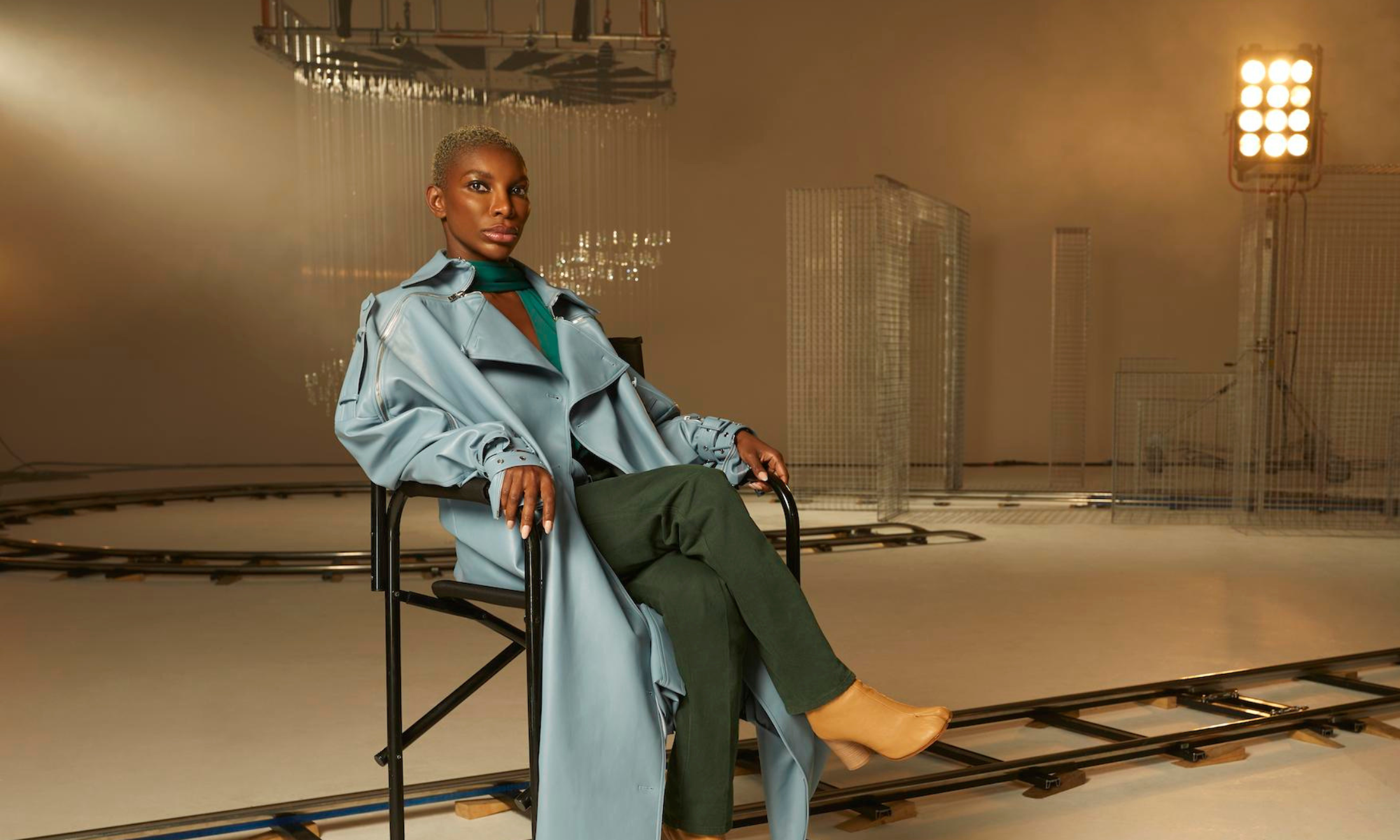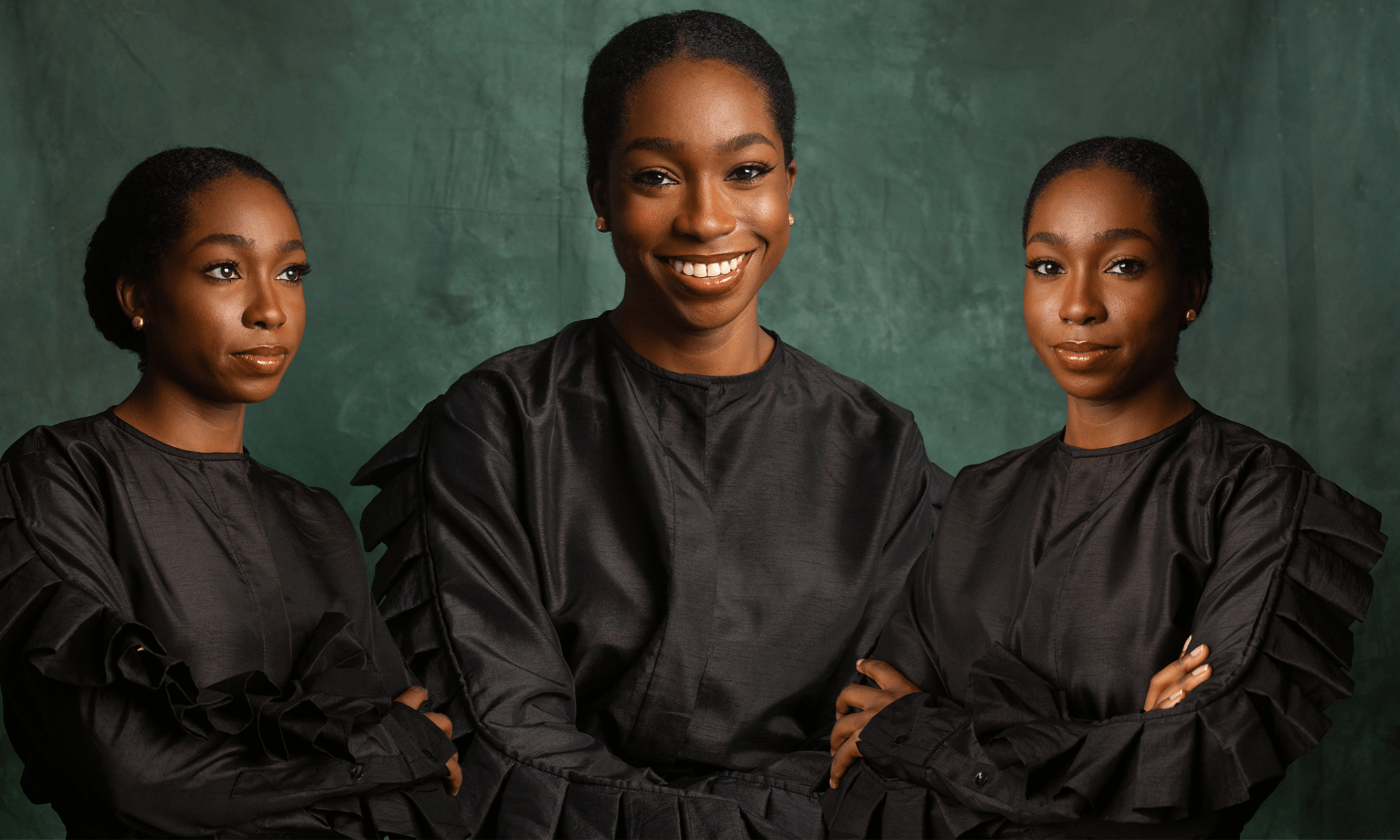Speaking to Jodie Turner-Smith and the cast of the bold reimagining of Anne Boleyn
When writer Lily Fontaine visited the set of the new Channel 5 miniseries in Yorkshire to meet the actor and her co-stars, it didn't take her long to realise that Turner-Smith deserves the throne.
Lily Fontaine
26 May 2021
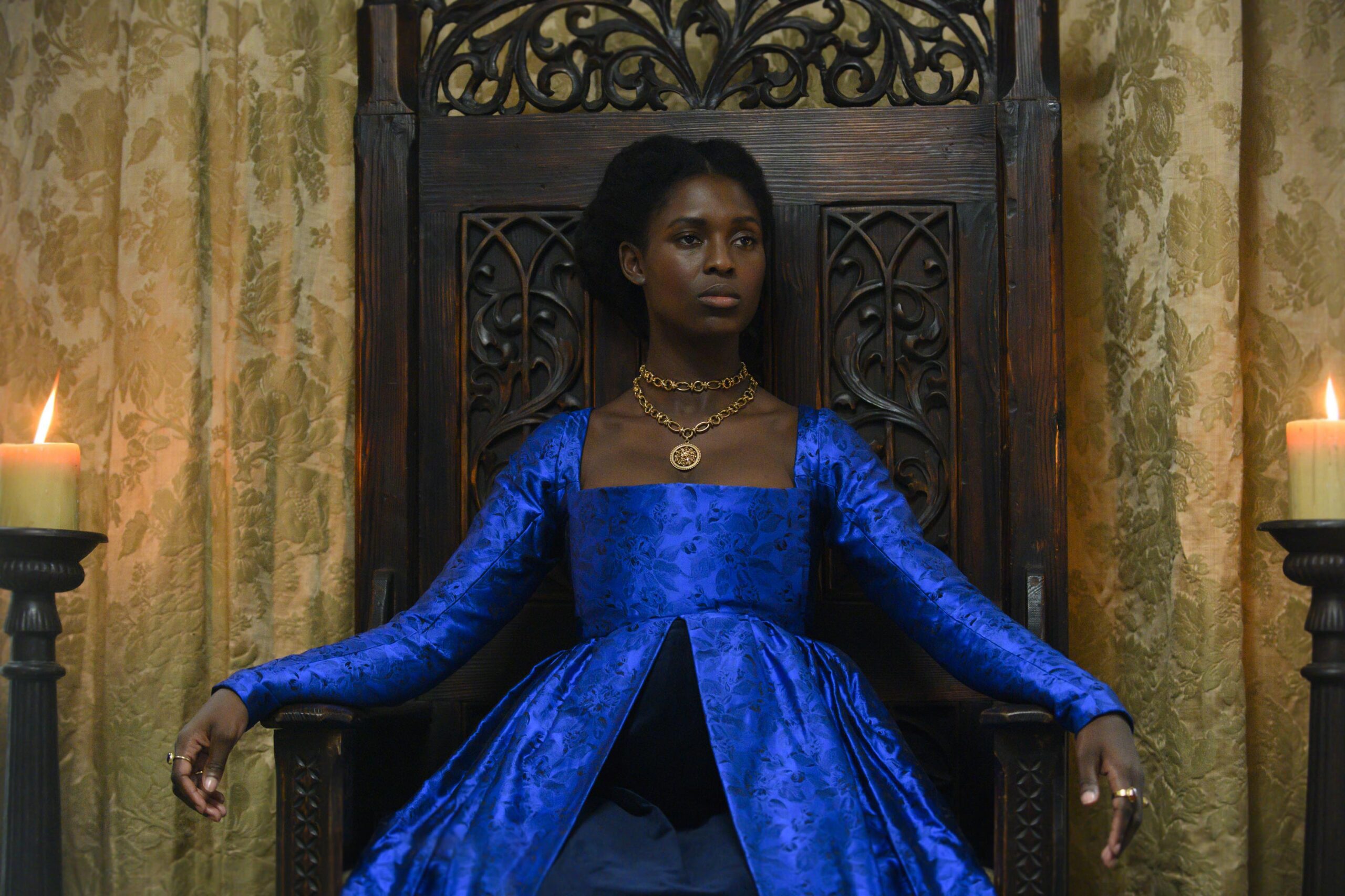
Photography via Channel 5 / Anne Boleyn
I arrive at the Anne Boleyn Covid testing facility in North Yorkshire on a December morning. Three hours later and disease-free, I get into a van, whose driver says, “I’m going to warn you – where we are going is muddy.” I look at my heeled boots and then out of the window as we leave suburbia, passing gated properties and young families on their daily hour of exercise, down narrow, cobbled country roads, and into the 16th century, where I am set to meet a Tudor queen that I’ve never seen before. She’s a politician. She has PTSD. She is black.
From the production team that brought us 2020’s critically-acclaimed Rocks, comes Channel Five’s own ‘colour-blind’ period (psychological) drama: Anne Boleyn. Her second time playing royalty, the mini-series stars Queen and Slim’s Jodie Turner-Smith as the eponymous lead, with I May Destroy You’s Paapa Essiedu as a playful ally, friend, and brother, George Boleyn; and Trigonometry’s Thalissa Teixeira as the closest lady in waiting, Madge Shelton – all of whom I spoke with when I was invited to the set in December 2020 and in interviews since.
Airing from 1 June, the three-part miniseries is a dark, intimate, feminist re-framing of a well-known, and often wrongly depicted storyline. It follows the final months of Anne’s life as she struggles to secure a future for the daughter, who she argues, should become the rightful heir to the throne of England. On-screen we are regularly updated with the time left until her execution – serving as a reminder that, in this patriarchal society, she is a ticking time bomb from the moment Henry’s son arrives stillborn.
“The three-part mini-series is a dark, intimate, feminist re-framing of a well-known, and often wrongly depicted storyline”
Ripley Castle, a stunning 14th-century property whose lake, serves as the backdrop of Anne Boleyn’s boat to execution. Most of the filming for the show was done at Greenwich Castle, where Henry and Anne spent a lot of time. Episode three, being captured as we walk down towards the lakeside, is mainly set in The Tower of London, but filmed at Bolton Castle in Wensleydale. On the boat are Cromwell, Lady Shelton, The Duke of Norfolk, and, of course, Anne Boleyn, dressed in black and looking stunningly stoic for a woman in her final moments.
“In Castle Bolton, there’s this courtyard that had actually been blown up by Cromwell. I was stood on the platform like – this is the first real character I’ve played… these people have been here. Suddenly, their ghosts were there… you’ve got these bond lines that go directly into the past. Amanda [Burton], James [Harkness], Jodie, and I had a similar higher level of understanding that hit us hard,” says Thalissa Teixeira on the impact of filming in such historically significant surroundings during our interview later that day.
Finding that connection was integral to the identity-conscious process of the casting director Kharmel Cochrane (End of the Fucking World, Saint Maude, The Lighthouse), which makes space for and embraces how actors can bring their whole identities or even parts of their identities to a character.

As Thalissa explains: “She [Jodie] is just a queen. Everyone is perfect in their parts. Is it colour blind casting? Is it colour-conscious casting? I don’t like either of the terms. The word ‘blind’ makes it feel like you’re ignoring a race issue or shoehorning people into situations that they would never normally perform in. There wasn’t a brown Madge but there was a Madge that could empathise with the Queen like me and could be loyal like me.”
“Is it colour blind casting? Is it colour-conscious casting? I don’t like either of the terms. The word ‘blind’ makes it feel like you’re ignoring a race issue or shoehorning people in”
Thalissa Teixeira
Thalissa also explains how stage actors have been performing outside of their race since the 70s; the suspension of disbelief is nothing new for theatre audiences, which is why questions around the actors’ suitability for their roles, regarding skin colour, seem prehistoric. It is all about finding that perfect fit, and this connection is something we touch on when I have a Zoom call with Paapa Essidu, whose interpretation of George Boleyn is a glimmer of modernity, male empathy, and warmth among a collection of men who make me thoroughly uncomfortable.
“I think a real cornerstone of his character is around familial love, what you will do for your family or to protect your family. That instinct is really strong within George. He’s thinking about his sister and what he can do to help, protect and guide her, almost at all times,” says Paapa. He describes their relationship as “joyous, fun, and silly” in a cold environment.
“There’s so much politicking that you forget these are real people with real fears and anxieties, that need guidance, reassurance, and people around them that they trust. I thought there was something unique about that relationship. I related to that.”
None of the casting choices really highlight this concept of character/actor connection more than that of new working-mum Jodie as the new-mum and new-queen, Anne. “The story resonated with me. As a mother, so many things felt important, powerful, and special. I see everything through the lens of that now.” she explains to me. Throughout our conversation, I am struck by the regality of her presence, even without the palatial surroundings and iconic headdress. The actress gave birth to her daughter with husband Joshua Jackson in April 2020, not long before the filming of the series began.
“It was intense and emotionally difficult because nursing is a special experience that happens for a very short amount of time. Stress and breast milk don’t really go together so, it was challenging to balance myself to provide that for my daughter, while also shouldering this responsibility of leading a show. Being in so much of it, I didn’t really have breaks. It gave me so much respect for all of the working mothers who are doing it with far fewer resources than I have. I was fortunate that the filmmakers were very supportive of my nursing schedule.”
Why does this make Jodie perfect for this queen? As a new mother, she can empathise with the experience of carrying a child, birthing a child, loving a child, and, as she revealed to me when we spoke, losing one. The still-birth scene is a brutal watch, but beautifully honest in its execution, and marks the start of the decline of Anne’s royal protection and mental health.
“I felt very close to the grief of it, having just had my own experience in labour and delivery, the idea of experiencing loss at the end of it was devastating to me. I am familiar with the pain of miscarriage and wanted to honour the experience of stillbirth, in the hope there is truth there that somebody resonates with,” she explains
“There’s so much stigma around miscarriage and stillbirth, and mystery around fertility where it shouldn’t be. You could sense every person inside that scene had so much respect for what we were doing. It’s only inside of an environment like that, where you feel free to create something so tragic. People should see this is what some women have to go through. Enough with us going through our pain privately because that’s why there’s so much shame around it.”
“People should see this is what some women have to go through. Enough with us going through our pain privately because that’s why there’s so much shame around it”
Jodie Turner-Smith
And she proves this with a performance that subtly presents the degrading mental state of a grieving mother with no support; as the episodes progress and the show gets closer and more frightening in its production, Anne experiences the psychological impact of losing her child alongside her impending doom, and we can see the muscles in her face develop a twitch in accordance,
“I love that Lynsey [Miller] built that into her. There was a physicality to what her characters are going through in their journey. There is something about a person’s body turning on them while they’re trying to maintain control – even when she’s trying to force her body to do what it needs to do, the body never lies.”
And Anne Boleyn is forcing it because she has a goal: to use her career as a politician to secure the future of her daughter. A stand-out scene that personally evoked a smirk, is when Anne straddles King Henry in bed while whispering business advice as pillow-talk.
“That scene was in so many ways about power,” explains Jodie. “I wanted it to always feel like she was topping from the bottom. She would always inspire his sexuality or mind in a way that made him feel he was the person pulling the strings. Ultimately, it’s what made him want to destroy her. He knew how much she controlled him.”
“That scene was in so many ways about power. I wanted it to always feel like she was topping from the bottom”
Jodie Turner-Smith
In the taxi back home from the hotel, I hope the discourse around the series focuses on depictions of motherhood, female strength, mental health, and the many other modern-day issues that the series tackles through its Tudor frame, rather than race – although, while reflecting on how I relate to the series, I do think of the character of Madge being mixed-race with a white mum, and find myself smiling at being represented.
But, this isn’t about me, which is what I said to Thalissa Teixeira after explaining that this was my first piece for gal-dem. Except, maybe it is – kind of,
“We’re doing this together – it is about you,” says Thalissa. The sacrifices that we take, as black women, as women, wherever you’re from and however you have become a woman.”
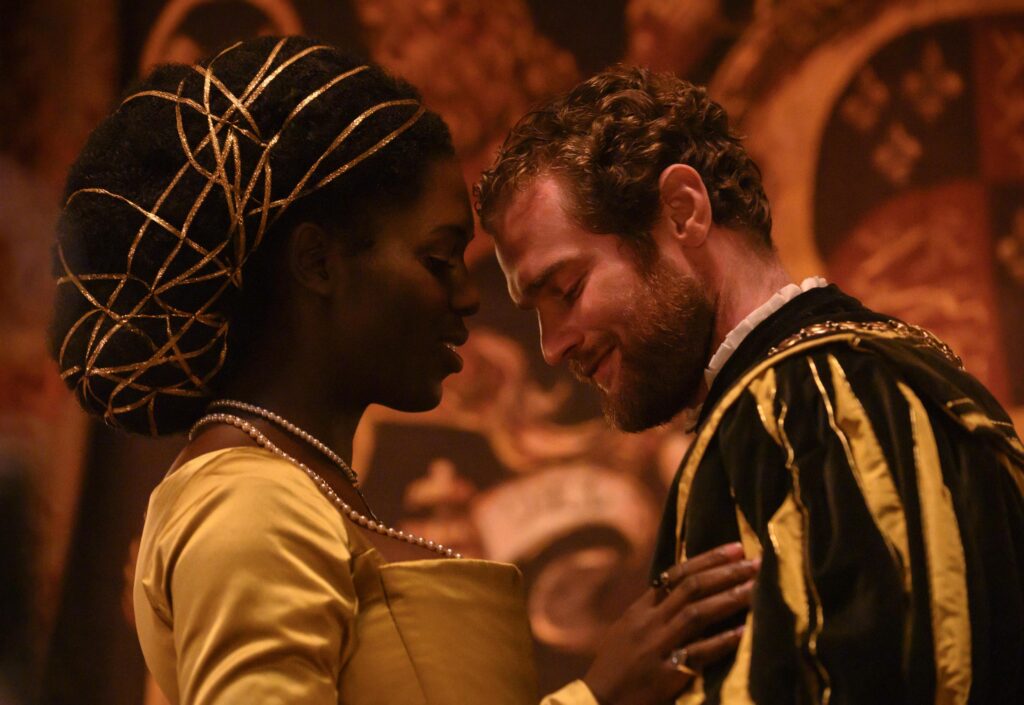
Anne Boleyn is a new, intimate, gory, honest perspective of not just the bit before the second wife of Henry the Eighth gets her head chopped off, but the experiences and trauma of a working mother in a patriarchal society. Thinking back to my earliest memory of this era of the British monarchy, I dig up some buried nostalgia; the free Horrible Histories: Terrible Tudors CD I got from a Kellogg’s box that sent me to sleep when I was in school. After watching this series, I find that, even though Terry Deary claimed to have left all the gory bits in, this was a huge lie – which is quite common for historical depictions of the queen on our screens and in our books. Justin Chadwick’s The Other Boleyn Girl takes the rumour of Anne’s incest to the bedroom, despite most historians citing her evangelical faith as proof that this could never be true.
Producer Faye Ward put it best: “People’s perceptions of Anne Boleyn have always been told by the old historians. You notice when you’re entrenched in it everyone refers to ‘Anne’s downfall’ as if it’s her fault when actually she was murdered by her husband and the men around her because they didn’t like her political views. She wanted to do better for the country and others didn’t like that opinion.”
If Horrible Histories’ claims of ultimate gore rang true, they would have included the experiences of Anne Boleyn in much finer detail, which would have made a much more interesting and productive listen for a young girl, than that of the man who made it all happen. Thankfully, we have it now and we have Jodie Turner-Smith to present it.
Anne Boleyn airs 1 June at 9pm on Channel 5


